Written by Amanda Fisk & Photographed by Paige Green
Finding a Calling on a Trip to Peru
Nicasio is a very scenic and attractive natural area, with forested and open ridge lines surrounding a wide rolling valley in Marin County, California. Oak, bay, and fir trees are common in the area, and wildlife is abundant. Nicasio is also home to Alpacas of Marin, a commercial alpaca farm on 12.5 acres overlooking the Nicasio Reservoir. Owner Sandy Wallace breeds, raises, and shows Suri (pronounced Soo-Ree) and Huacaya (pronounced Wa-kye-ah) alpacas. Many of her herd are award winning and nationally acclaimed. Offering breeding stock for sale, as well as boarding and stud service, Sandy also sells both Suri and Huacaya raw fiber and yarn. Additionally, Sandy is a member of the Alpaca Owners Association, a national organization.
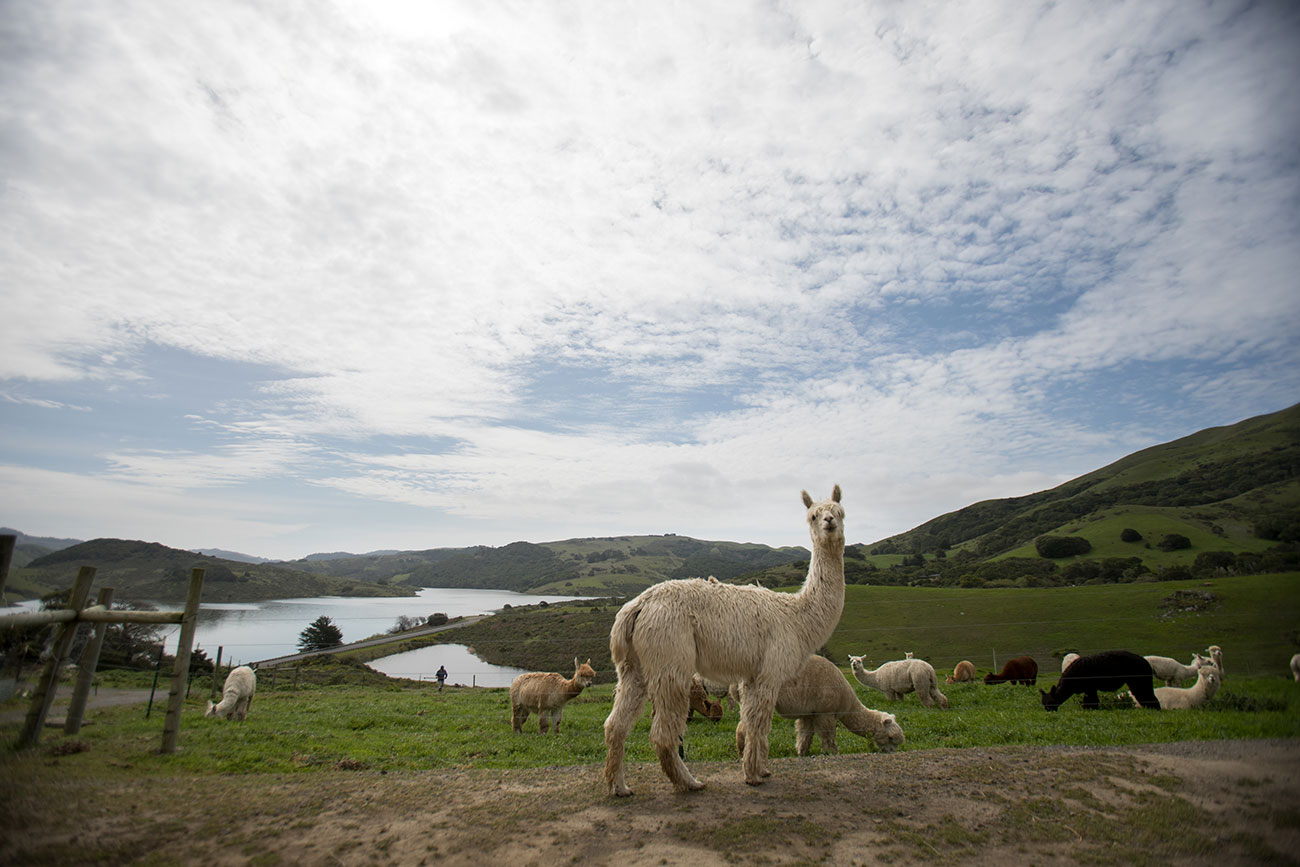
It all began when Sandy and her husband Michael visited Peru. It was there they fell in love with alpaca and began thinking of a business working with these animals. When they returned from Peru, they began purchasing alpacas and boarding them around the country. This was a very educational experience, allowing them to learn from other alpaca owners and enthusiasts. The experience helped them gain knowledge and an understanding of how to breed and work with such exceptional animals.
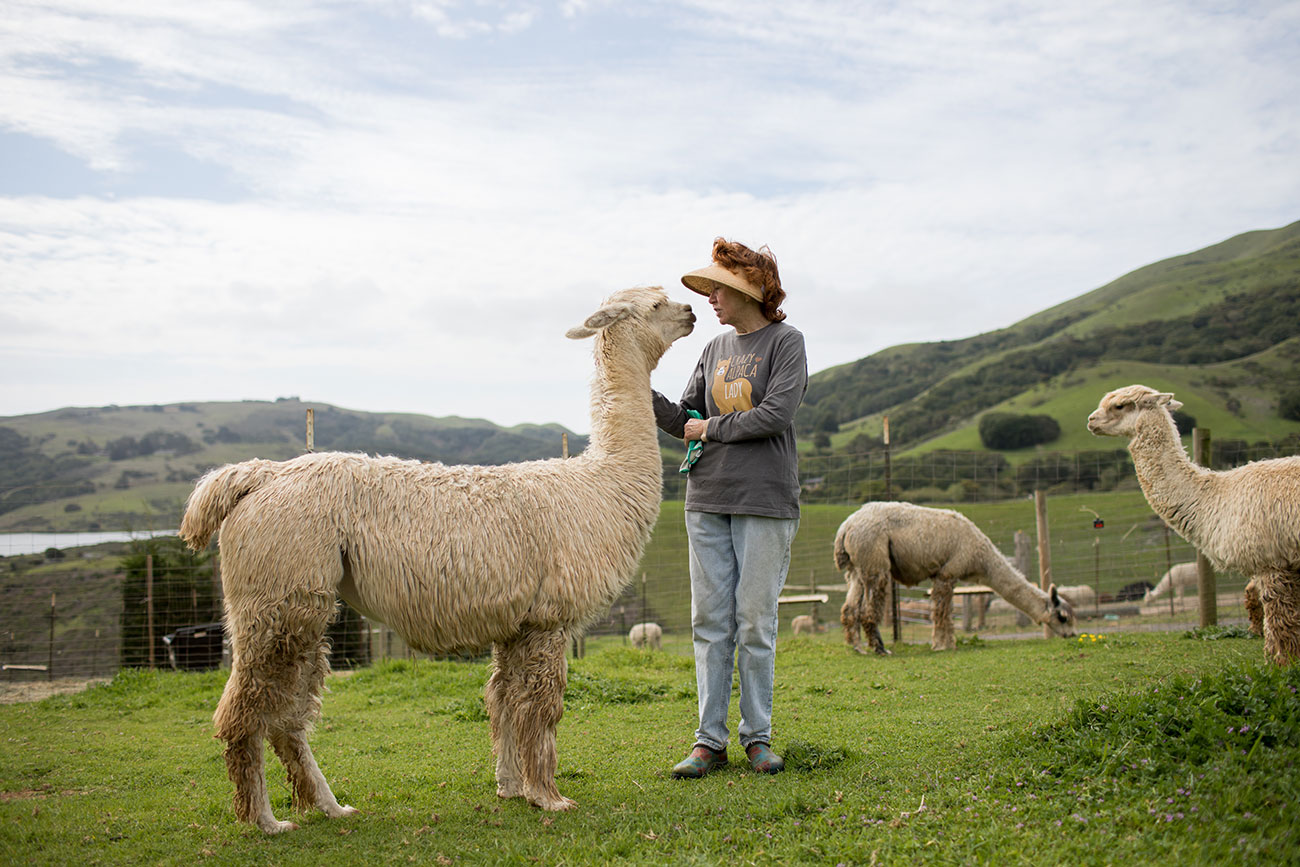
After boarding their animals for several years, they decided they wanted to farm and work with the animals themselves. So they purchased Green Rock Farm in 2007, and the land enabled them to house all of their alpaca herd in one place and create their business, Alpacas of Marin. In 2014, working with the alpacas became a full time commitment.
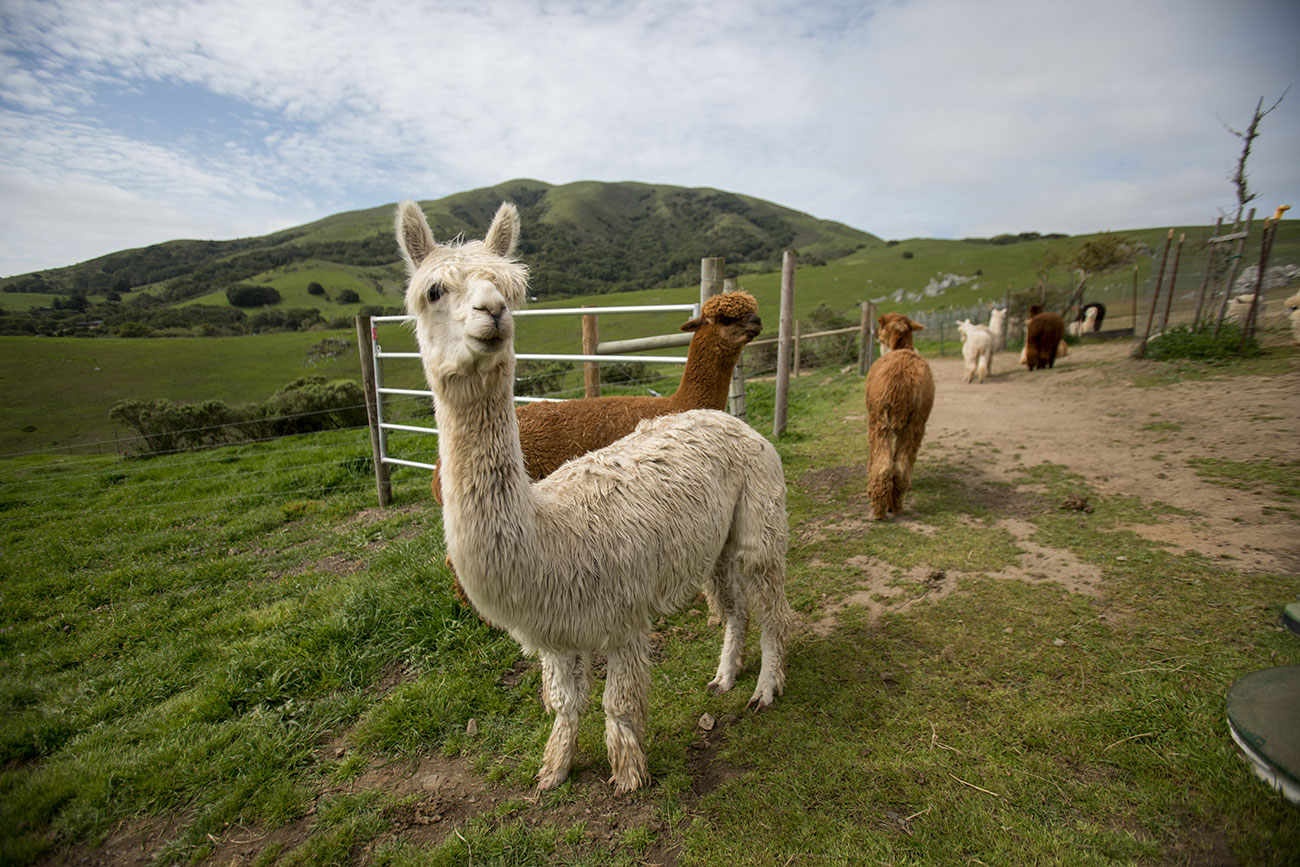
Alpacas belong to the family of Camelid, camels and llamas being the most familiar to the public, with the more rare Guanaco and Vicuna found in South America. Huacaya alpacas are more common and account for 90% of all alpacas. They have a fluffy, crimpy fleece that gives them a teddy bear like appearance. Suri alpacas have a silky, lustrous fleece that drapes gracefully in beautiful pencil-like locks on the animal, almost resembling dreadlocks, but without any matted fibers. Both fleeces are soft and luxurious.
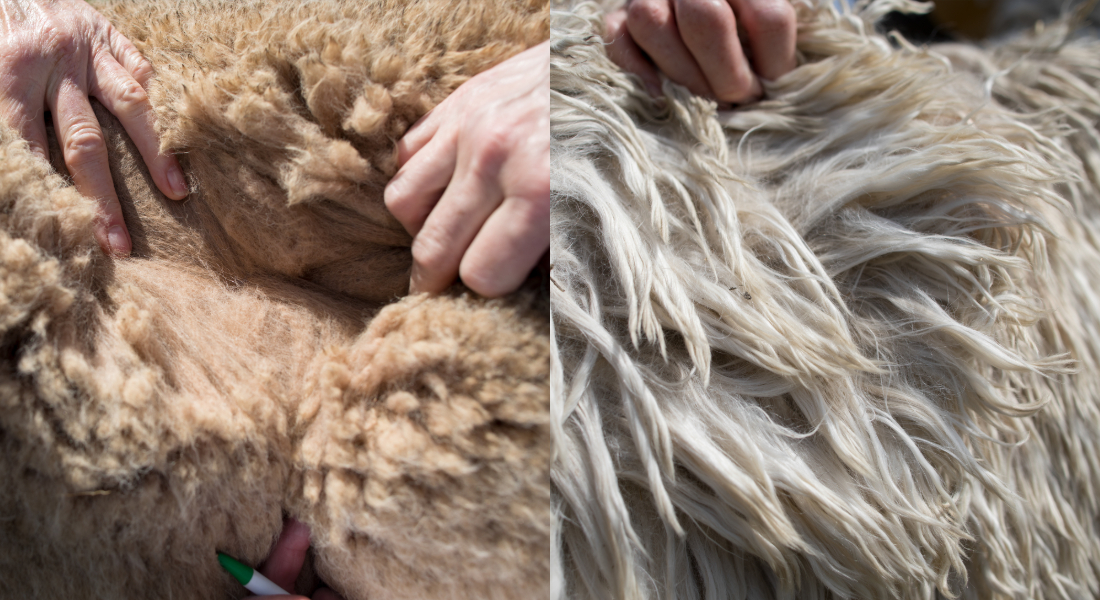
Alpacas have been domesticated for thousands of years for the exceptional luxury fiber they produce, which is typically used for making clothing and blankets. Alpaca fiber can be blended with sheep’s wool to make soft, durable garments. At Alpacas of Marin, alpaca fiber diameter (or, micron count) ranges from 15 to low 30s in micron, and the lower numbers create a very desirable, luscious feel to end products. Fiber colors can range from black, white, cream, shades of brown, shades of fawn, and shades of grey.
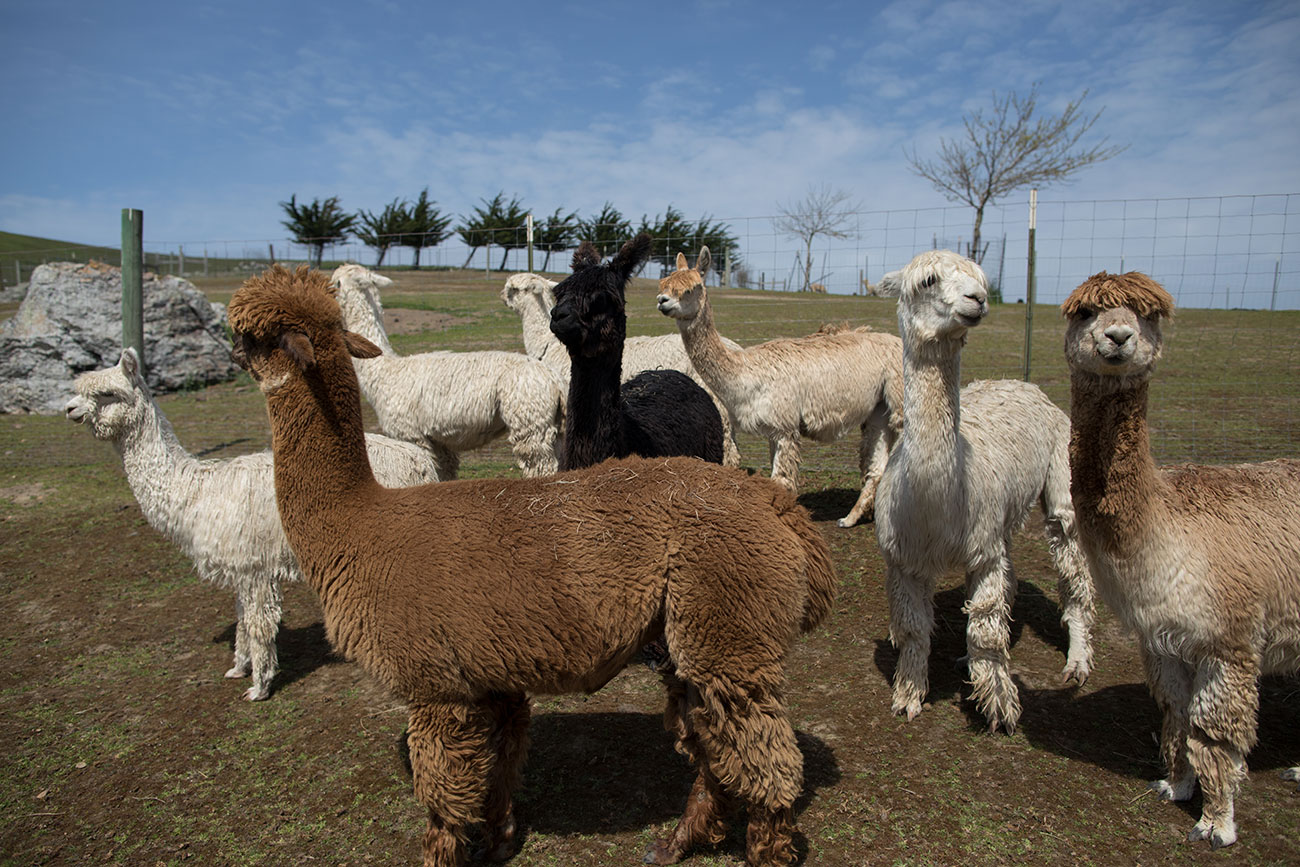
Capturing Carbon through Alpaca Farming
Sandy points out how alpacas are very curious creatures and seem like inquisitive children when strangers are present, but then become shy when you approach them. Some individuals are very friendly and are keen to be rubbed, scratched, and kissed. Alpacas seldom challenge fencing, so Sandy designed the farm with a series of outside pen enclosures to help manage various groups of females and males: the young, older, pregnant, etc. Alpacas are browsing herbivores needing room to move around to consume a mixture of grass and vegetation so the herd is organized in various groups to manage and move them to pasture and forage. Sandy also designed the barn, perfect for separating and housing the alpacas when necessary. Daily management of the animals involves movement of groups from pen to pasture, which Sandy accomplishes with a gentle voice and hands held in a downward “V” as she approaches and encourages the alpacas to move from one area to another. Several boarders are mixed in with Sandy’s herd and they are also given the same affection and attention as if they were part of Sandy’s own family of alpacas. Two Anatolian guard dogs, Gustafa and Karakus, help protect the herd from predators.

Influenced by Fibershed, and in collaboration with the Marin Carbon Project, Sandy has also been experimenting with ways to further sequester carbon in one of the pastures on her land. She has taken soil samples and is proud to point to the rich growth and color found in this pasture, created from the excellent compost of the alpaca dung. Sandy has also found a demand for alpaca compost from private and commercial growers. This is a product high in nitrogen and potassium, yet odorless. Alpacas are pseudo ruminants having a single three-chambered stomach that digests roughage, grass, and hay efficiently into a manure often known as “green gold” for its high nutrient content. Those nutrients are then spread on the pasture to build healthy soil and encourage vibrant grass growth in seasons to come. Alpacas often defecate in communal dung piles in a certain area which makes easy collection for the project. They do not have hooves, but soft pads with two hard toenails which have less of a compacting impact on the ground. Alpacas also do not rip grasses out by the roots when eating, but chew short bunches at a time which allows for faster regrowth, and has a stimulating effect on the grass plants’ root systems.

Sandy love and understanding of her herd is evident: as she gently moves them from one area to another, she knows their language. A predominant humming sound can be heard — alpacas hum when they are curious, content, worried, fearful, distressed or cautious. They will snort if another alpaca is too close or is being too familiar. They will also “grumble” while eating, letting another animal know that it is too close for comfort. Knowing the various sounds the alpacas make is an extremely valuable herd management tool. It helps to gauge compatibility, rank, level of aggressiveness, and reproductive readiness. Alpaca communication is a valuable tool that Sandy understands and utilizes while working with her animals. She knows each individual alpaca and gently calls and talks to them; she speaks to each individual calling them by name (all seventy-eight). They have names like Juan Carlos, Hawkeye, Kissyface, Anabella Chi, Diva, Spaceman Spiff (our intrepid hero), Tempest, Red Storm, Miss Silk and Squeak. And there is also Coppola, a national champion.
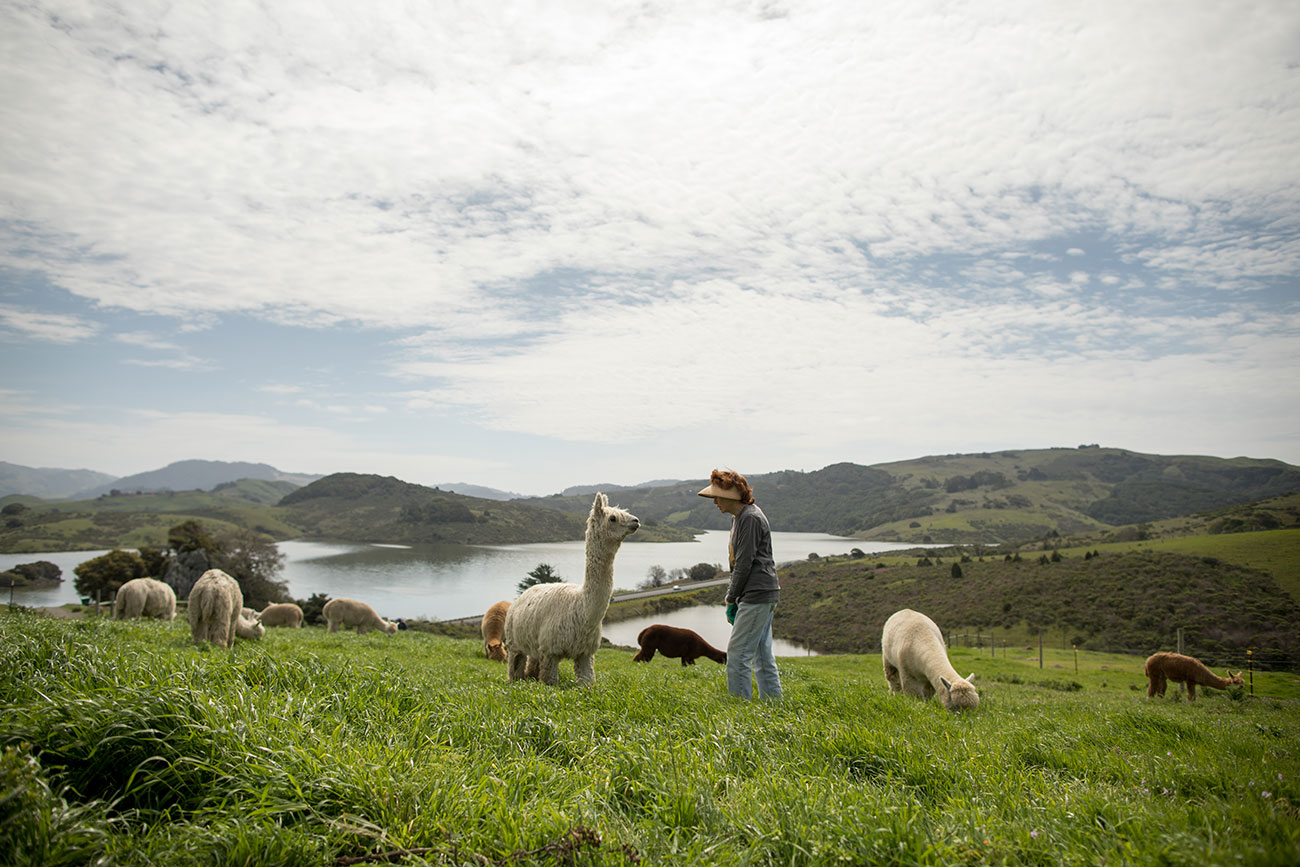
There is a special magic at Alpacas of Marin, not only a commercial alpaca farm, but a home for a herd of wonderful animals. A feeling of passion and affection is observed here in working with the alpaca. With 78 alpacas present, Sandy exudes a connection and enthusiasm with each individual animal. She calls each one affectionately by name as she lovingly introduces them to show their personality, their coats of extraordinary fiber and many of the show qualities that she has developed through her breeding program. Sandy has attended many alpaca shows and has won many ribbons and trophies not only for the conformation of the animals, but also their prize-winning fleeces.
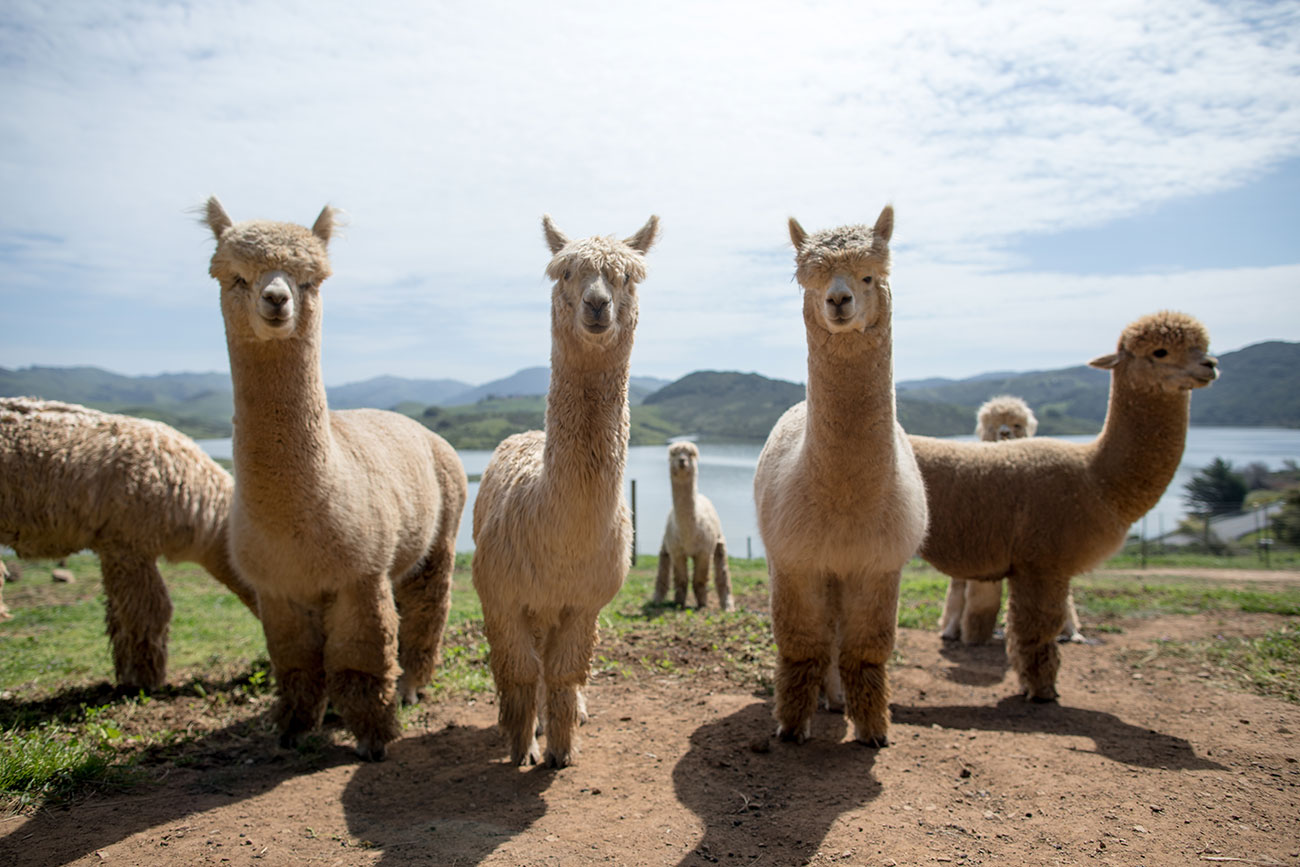
Looking out from Alpacas of Marin, at Green Rock Farm, across Nicasio Valley and the Nicasio Reservoir, you can see and feel evidence of “Alpacas in Paradise,” in the love, affection, and devotion of Sandy Wallace to her very curious, calm, and environmentally-friendly herd of exceptional, humming alpacas.

To learn more about Alpacas of Marin, visit them online. Learn more about Fibershed’s Producer Program, a membership-based network of farmers, ranchers, designers, sewers, weavers, knitters, felters, spinners, mill owners and natural dyers living and working within 51 counties in the North and Central regions of California.
Read more about incredible alpaca farms here.

